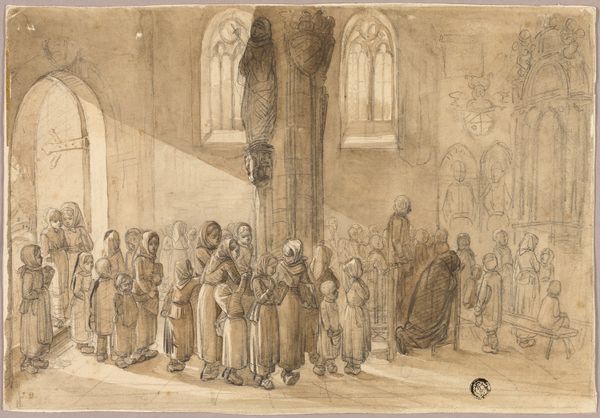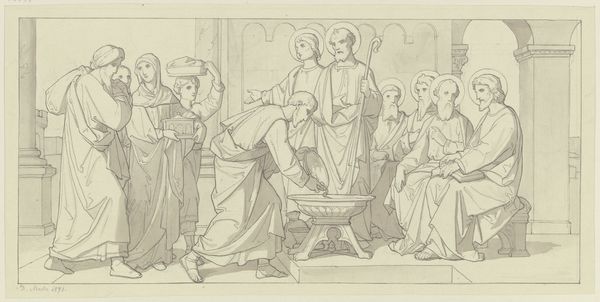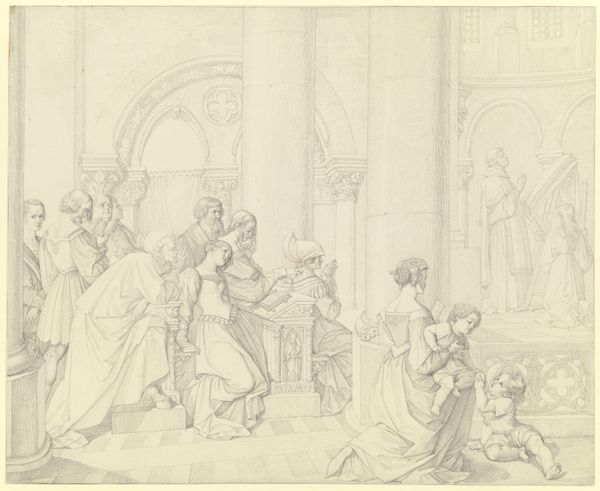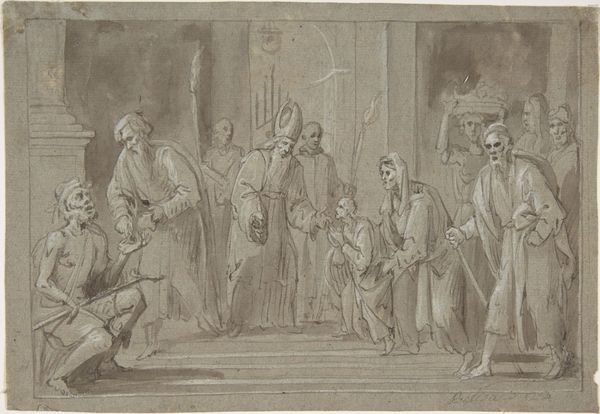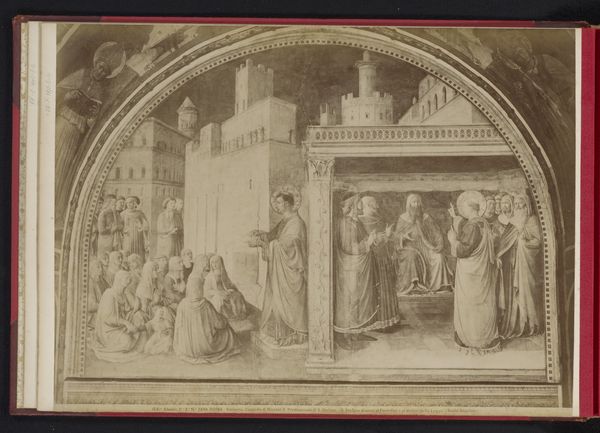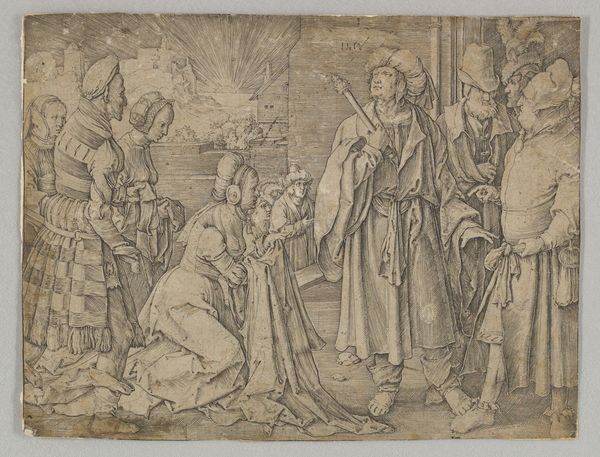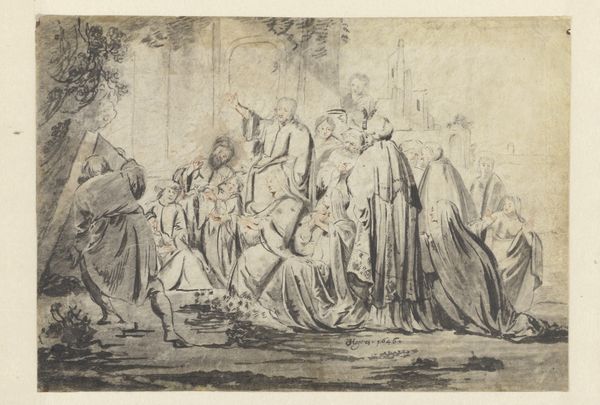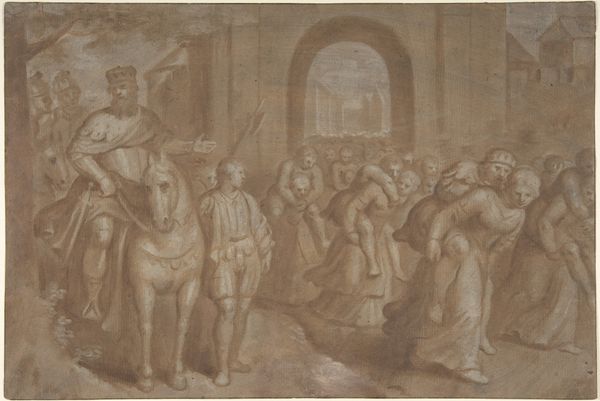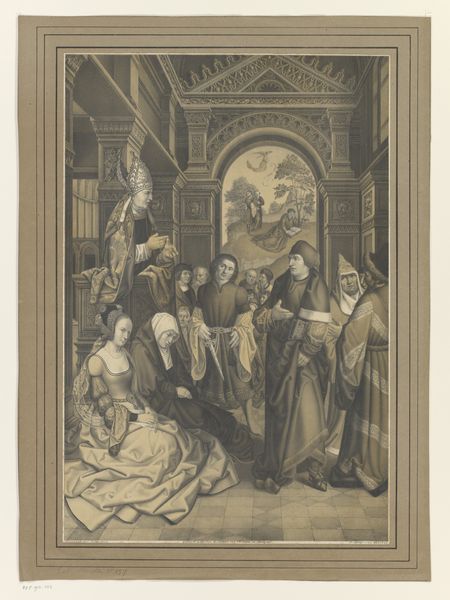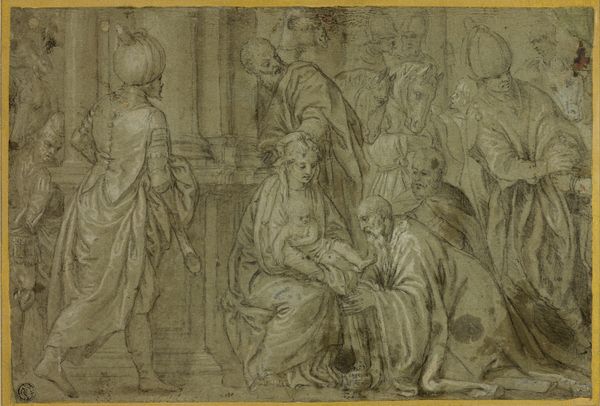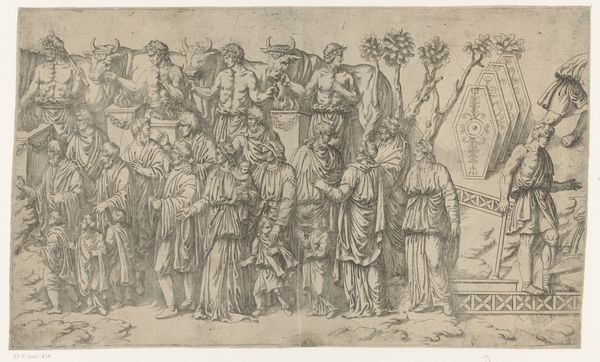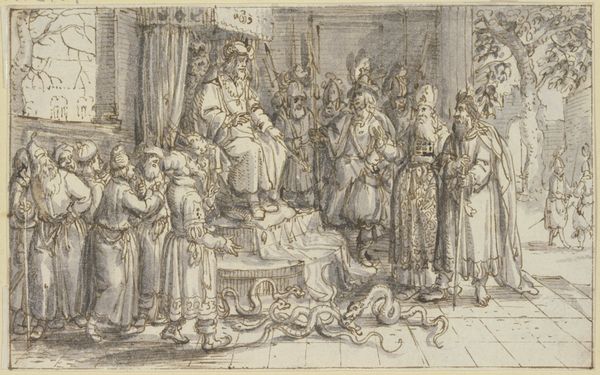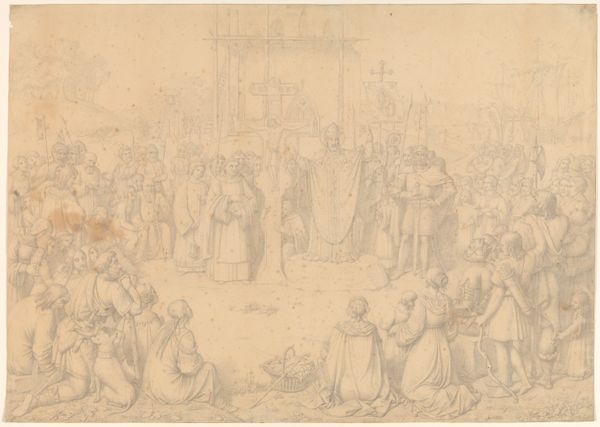
drawing, paper, pencil, chalk, charcoal
#
drawing
#
charcoal drawing
#
figuration
#
paper
#
romanticism
#
pencil
#
chalk
#
charcoal
#
history-painting
#
watercolor
Copyright: Public Domain
Editor: This is "Procession of Roman Girls to their First Communion" by Johannes Riepenhausen, created in 1812. It's a drawing rendered with charcoal, chalk, and pencil on paper, currently housed in the Städel Museum. The figures possess this somber yet delicate aesthetic... What kind of narrative is the artist trying to construct with this portrayal? Curator: That "delicate aesthetic" is certainly intentional. Think about the early 19th century, a time of massive upheaval with the Napoleonic Wars reshaping Europe. Religious and cultural traditions were seen as vital anchors. How do you think an image like this served as a response to the rapidly changing political landscape? Editor: So, you’re saying it presents a visual form of social stability amidst all the political instability? It romanticizes traditional rituals? Curator: Precisely. Consider how museums and galleries displayed works like these. It wasn't just art for art's sake. It reinforced societal norms, using visual language. These serene depictions offered solace, reinforcing faith in familiar practices when other institutions were failing. The artistic composition serves as a form of public messaging. Notice how all the figures converge toward the Bishop, thereby communicating submission to hierarchical power structures. What feelings are evoked for you through the solemn procession of identically dressed girls? Editor: I see a sense of imposed conformity alongside a celebration of communal identity, almost a staged production of piety that disregards the individuals. Curator: A critical insight. Can you see the potential political uses embedded in this artwork? Consider what a leader would feel gazing upon an image representing devoutness and cohesion among the masses. Editor: Right. By linking shared religious experience with national pride or cultural identity, the leaders are manipulating how power is viewed by the public, who accept these systems of governance as inherent social fixtures. Thank you. Curator: It's been a thought-provoking examination. Seeing art as an active agent, not just passive imagery, changes everything.
Comments
No comments
Be the first to comment and join the conversation on the ultimate creative platform.
